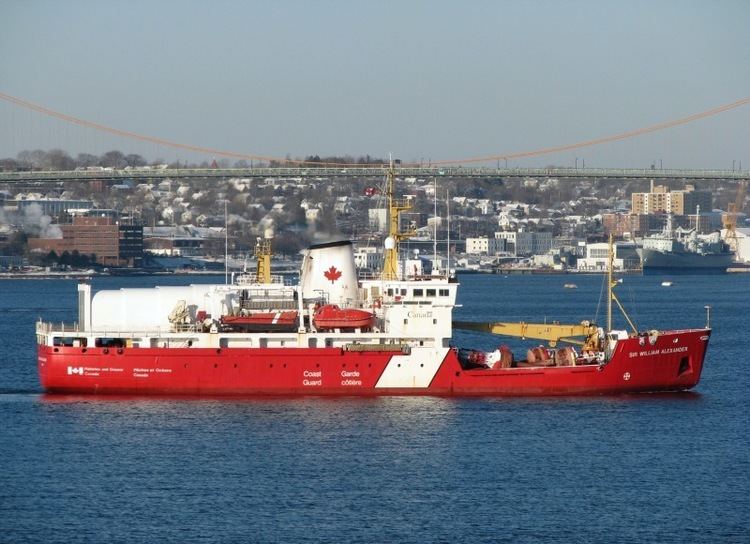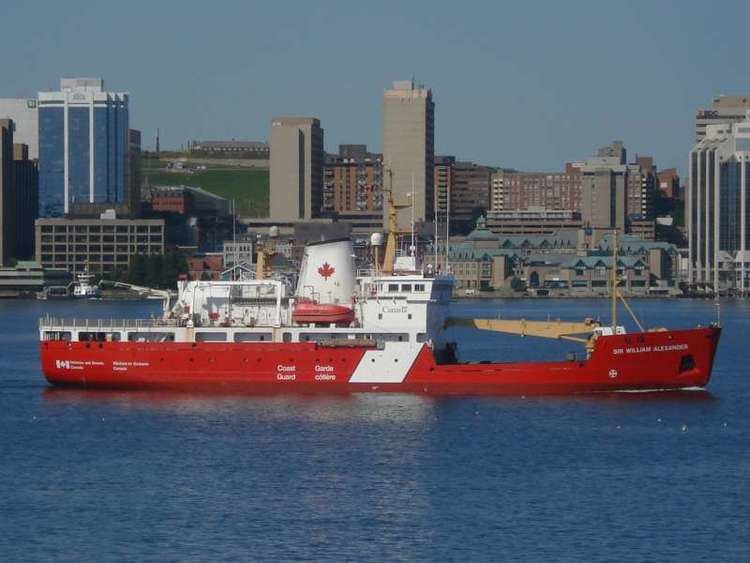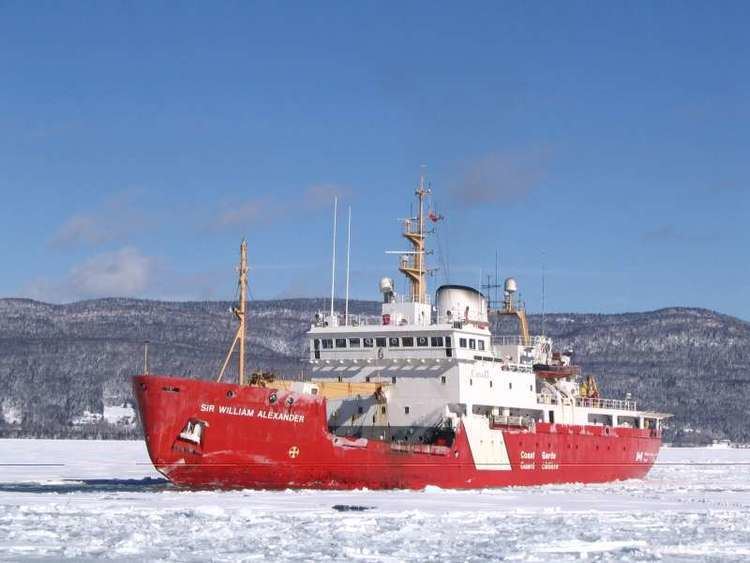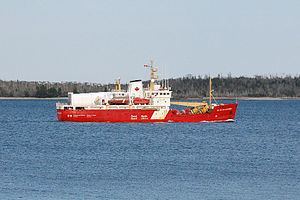Name Sir William Alexander Yard number 451 Launched 23 October 1986 Endurance 3.9 months | Namesake Sir William Alexander Commissioned 13 February 1987 Length 83 m | |
 | ||
Miranda davit ccgs sir william alexander
CCGS Sir William Alexander is a Martha L. Black-class light icebreaker. Entering service in 1987, the vessel is currently assigned to CCG Maritimes Region and is homeported at CCG Base Dartmouth, in Dartmouth, Nova Scotia. The vessel is named after Scottish explorer Sir William Alexander, 1st Earl of Stirling, who was an early colonizer of Nova Scotia.
Contents
- Miranda davit ccgs sir william alexander
- Description and design
- Operational history
- Hurricane Katrina relief mission
- Post Katrina operations
- References

Description and design

Designed as a light icebreaker and buoy tender, Sir William Alexander and sister ship CCGS Edward Cornwallis differ from the rest of the class by having one less deck in the superstructure and their buoy-handling derricks mounted forward. Sir William Alexander had her derricks replaced by a crane in 1998. Sir William Alexander displaces 4,662 long tons (4,737 t) fully loaded with a gross tonnage (GT) of 3,727.2 and a net tonnage (NT) of 1,503.0. The ship is 83.0 metres (272 ft 4 in) long overall with a beam of 16.2 metres (53 ft 2 in) and a draught of 5.8 metres (19 ft 0 in).

The vessel is powered by is propelled by two fixed pitch propellers and bow thrusters powered by three Alco 251F diesel-electric engines creating 8,847 horsepower (6,597 kW) and three Canadian GE generators producing 6 megawatts of AC power driving two Canadian GE motors creating 7,040 horsepower (5,250 kW). The ship is also equipped with one Caterpillar 3306 emergency generator. This gives the ship a maximum speed of 16 knots (30 km/h). Capable of carrying 784.0 long tons (796.6 t) of diesel fuel, Sir William Alexander has a maximum range of 6,500 nautical miles (12,000 km) at a cruising speed of 13.7 knots (25.4 km/h) and can stay at sea for up to 120 days. The ship is certified as Arctic Class 2.

The icebreaker is equipped with one Racal Decca Bridgemaster navigational radar operating on the I band. The vessel is equipped a 980 m3 (35,000 cu ft) cargo hold. Sir William Alexander is equipped with a flight deck and a hangar that can house two light helicopters of the MBB Bo 105 or Bell 206L types. However, the vessel is only allotted one helicopter. The ship has a complement of 26, with 10 officers and 16 crew. Sir William Alexander has nine additional berths.
Operational history

The ship was constructed by Marine Industries at their yard in Tracy, Quebec with the yard number 451. Sir William Alexander was launched on 23 October 1986 and entered service on 13 February 1987. The ship is registered in Ottawa, Ontario, and homeported at Dartmouth, Nova Scotia.
Hurricane Katrina relief mission

On 6 September 2005, CCGS Sir William Alexander left Halifax Harbour, together with the Canadian warships Athabaskan, Ville de Québec and Toronto, to participate in a humanitarian aid mission named Operation Unison, which provided relief to part of the devastated Gulf of Mexico coast of the United States following Hurricane Katrina.
Sir William Alexander participated in the mission as a supply vessel, and also to effect repairs to aids to navigation (navaids). The decision to assign Sir William Alexander to the Operation Unison task force was unprecedented in Canadian Coast Guard history as no icebreaker from the service has operated for an extended period of time in southern tropical waters such as the Gulf of Mexico, aside from transiting the Panama Canal to and from British Columbia.
On 19 September 2005, it was announced that the three warships were no longer needed in the Gulf of Mexico, given the massive U.S. military response as well as increasing civilian aid flowing into the region. Sir William Alexander was exempted from returning to Canada however, as her heavy lift capabilities were considered useful for ongoing repairs to aids to navigation which were destroyed by Hurricane Katrina, and later Hurricane Rita (23 September). On 28 September, the Minister of Fisheries and Oceans announced that Sir William Alexander was being retasked from relief efforts and navigation systems repair to assist the National Oceanic and Atmospheric Administration in repairing the damaged network of weather buoys along the Gulf of Mexico, Caribbean Sea, and Atlantic coasts. She returned to CCG Base Dartmouth from Operation Unison on 24 October 2005.
Post-Katrina operations
Sir William Alexander was involved in a fatal towing incident involving the fishing vessel L'Acadien II during the 2008 Canadian commercial seal hunt. On 30 September 2014, a Canadian Armed Forces Bell CH-146 Griffon helicopter clipped Sir William Alexander's antenna during a training exercise in Mahone Bay. The helicopter was forced to make an emergency landing in Lunenburg, Nova Scotia. In February 2017, Sir William Alexander was dispatched to aid the merchant vessel Thorco Crown, which had caught fire in the Cabot Strait. The engine room fire was extinguished but the merchant was disabled. When a tugboat arrived to take Thorco Crown in tow, the tugboat was unable to secure the towline. Sir William Alexander then took Thorco Crown in tow during the night, transferring the tow to the tugboat in the morning.
